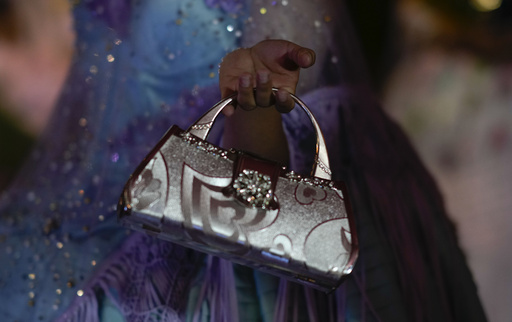
VIACHA, Bolivia — In the vibrant markets, extensive farmlands, and lively gatherings of Viacha, a town located southeast of Bolivia’s capital, women are often seen adorned in traditional attire featuring bowler hats, tiered skirts, and fringed shawls. This fashion, typical of “Cholas,” Indigenous women from the nearby highland Altiplano, recently took the center stage in a unique event.
On a lively Friday evening at the town square, situated about 22 kilometers (13 miles) from La Paz and over 12,000 feet (3,650 meters) above sea level, the dirt roads were transformed into a runway teeming with excitement. Teenage boys and proud mothers filled the area, captivated by the sight of young women, aged between 15 and 25, confidently strutting their stuff to the upbeat tunes of early 2000s American pop music. Local vendors sold hot dogs and empanadas, while cheers erupted in both Spanish and the Indigenous Aymaran language.
Dressed in sparkling footwear and bright, voluminous skirts known as “polleras,” the amateur models showcased their flair. They spun, tipped their hats, and exchanged flirtatious looks with the audience. “In the past, people connected these skirts only with rural life and saw us as mere peasant women,” remarked Rogelia Canaviri, 42, her face aglow as she watched her daughter, Carolina, walk proudly down the runway. Adorning her own woolen shawl, velvet hat, and plain beige pollera—attire she still wears to tend to her cows and sell cheese—Rogelia expressed her pride in seeing the next generation embrace this heritage.
Historically, the Aymara people endured multiple conquests, first by the Inca and later by the Spanish colonizers, who pressured Indigenous groups to conform to the fashion trends of their era. According to local lore, the fashionable felt bowler hat became part of the “Chola” ensemble when introduced by British railway workers in the 1920s.
While the terms “Chola” and its affectionate variation “Cholita” were once regarded as derogatory by Bolivia’s predominantly white and wealthier population, these labels have recently undergone a reclamation. The Indigenous Aymara have begun to embrace the term with pride, rediscovering the vibrant clothing of their ancestors. Brittany Cantuta Valeria, a first-time model at 21 years of age, shared, “Today, being a Cholita is exciting and interesting. We’re finally gaining the respect we deserve, so I wear this attire to enjoy myself, celebrate, and dance, leaving the fields behind.”
Most of the participants in this runway show were raised during the administration of Evo Morales, the first Indigenous president of Bolivia who served from 2006 to 2019. He was a prominent advocate for the Indigenous majority in the country, prompting legislative changes that elevated recognition and rights for Bolivia’s 36 ethnic groups. His administration invested in promoting Indigenous languages and supporting folk arts, sparking an increase in Chola-themed fashion events and beauty contests that expanded the presence of highland cultures.
However, until this event, Viacha—a town like many others nestled amid the rugged mountains—had never experienced such a fashion celebration. “I was very nervous, but I recognized it was the first time for all of us,” reflected 15-year-old Tomasa Ramirez. “I feel beautiful. Now I know I want to be a Cholita model in the future.”
Amid an ongoing economic crisis that has severely restricted families’ budgets while food prices have risen sharply, participating in the show proved to be a considerable challenge for many girls. Authentic velvet hats and vicuña wool shawls with silk fringes can cost a fortune, while polleras are priced in the hundreds of dollars. Jewelry, too, plays a crucial role, with the ideal pieces being gold, pearls, or diamonds for such formal occasions. Julieta Mamani, 16, lamented, “This year, affording genuine pieces wasn’t an option for me,” as she pointed to her gold-colored faux earrings. “I hope I can change that next year.”
As Canaviri watched her 24-year-old daughter strike poses for selfies in her stunning skirt, she had her own wish. “I hope my daughter continues to prefer skirts over pants,” she said. “I wore pants once and felt completely exposed. I just can’t do it again.”
